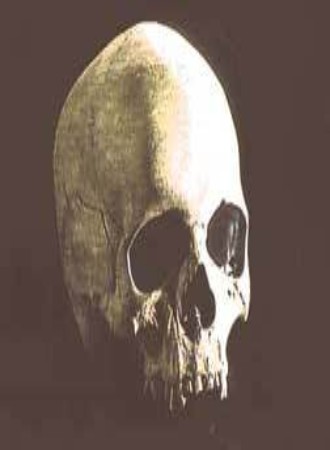
The Story of Hominid Evolution 1997
Distributed by Films Media Group, PO Box 2053, Princeton, New Jersey 08543-2053; 800-257-5126
Produced by Spiegal TV
Director n/a
VHS, color, 46 min.
Jr. High - Adult
Anthropology
Date Entered: 11/09/2018
Reviewed by Patricia Sarchet, MLS, Health Sciences Library, State University of New York at BuffaloThe Story of Hominid Evolution is a story about paleoanthropologists and the hominid skulls that made them famous. In this film one gets the rare chance to hear and watch some of the famous few, Meave Leakey, Tim White, Philip Tobias, Berhane Asfaw, and Michael Brunet, talk about the African hominid bones they have found.
The film concentrates on one paleoanthropologist, Meave Leakey. She is part of the Leakey dynasty of paleoanthropologists including her father-in-law Louis (Jane Goodall's benefactor), her husband Richard and their daughter. Unfortunately her life was not the focus of the whole film and as such much was left unexplored.
The film is disjointed, jumping from personalities to skulls and African landscape and back again. It seems that the director was trying to give one the feeling of what it was like to be a paleoanthropologist but focused on what it was like to be famous. The hominid bones from Africa became an aside, a prize for the scientist to build a reputation upon.
The cinematography is amateurish and too often out of focus. The computer simulation of hominid and chimpanzee skulls and the hominid foot is beautiful, and the morphing of a chimp skull to an hominid skull makes the film more than worth a visit. The filmed segments of hominid skull casts is equally wonderful.
I would recommend this film for students at a high school or college level with the caveat that they need some background in physical anthropology and the personalities involved. This film is not the whole story and the director only touches very lightly on the African hominid controversies of recent years which are flash points in anthropology and gender studies alike.